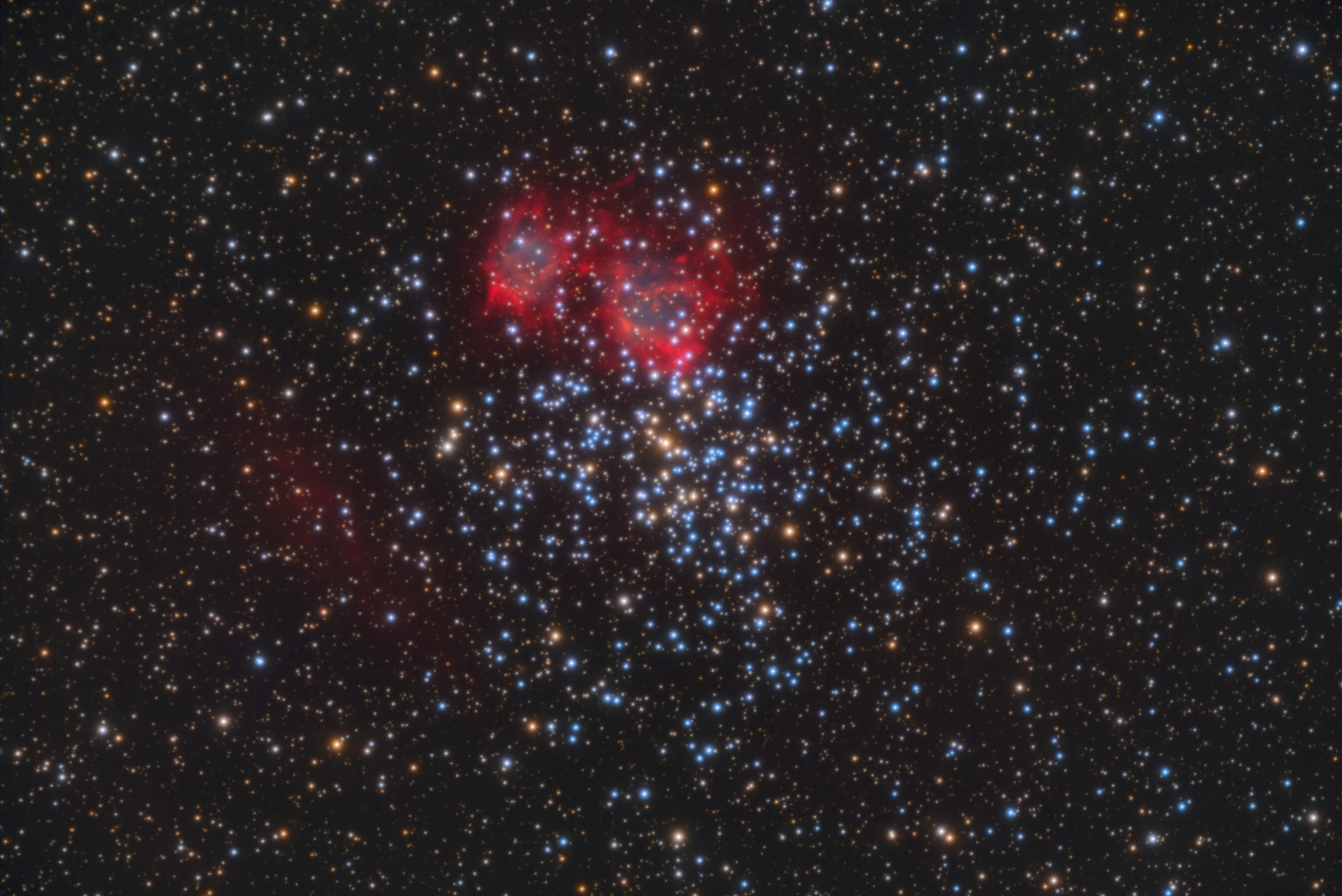Observation by Peter Goodhew FRAS: Discovery of The Oldest Visible Planetar...
Uploaded by
Peter Goodhew FRAS
Observer
Peter Goodhew FRAS
Observed
2022 Sep 10 - 15:15
Uploaded
2022 Sep 17 - 15:17
Objects
M37
Equipment
- APM TMB LZOS 152 Refractors
- QSI6120 CCD Cameras
- 10Micron GM2000 HPS mount
Exposure
A total of 84 hours 20 minutes (HaOIIIRGB)
Location
Fregenal de la Sierra, Spain
Target name
M37
Title
Discovery of The Oldest Visible Planetary Nebula, hosted by a 500 million year old Galactic Open Cluster
About this image
This image is believed to be the first deep colour image of the nebula.
It was captured jointly with Sven Eklund using our 3 robotic telescopes located in Southern Spain.
Image processing by Marcel Drechsler.
Data captured between 30 August - 10 September 2022.
Scopes: APM TMB LZOS 152 Refractors and Celestron C14 Edge HD
Cameras: QSI6120wsg8 and ZWO ASI6200MM Pro
Mounts: 10Micron GM2000 HPS and iOptron CEM120
A total of 84 hours 20 minutes (HaOIIIRGB)
More information at https://www.imagingdeepspace.com/iphasx-j0552262323724.html
An international team of astronomers led by members of the Laboratory for Space Research (LSR) and Department of Physics at The University of Hong Kong (HKU), have discovered a rare celestial jewel–a so-called Planetary Nebula (PN) inside a 500 million-year-old Galactic Open Cluster (OC) called M37 (also known as NGC2099). This is a very rare finding of high astrophysical value. Their findings have just been published in the prestigious open-access paper Astrophysical Journal Letters. https://iopscience.iop.org/article/10.3847/2041-8213/ac88c1
The planetary nebula, known as IPHASX J055226.2+323724, is only the 3rd example of an association between a planetary nebula and open cluster out of the ~4,000 planetary nebulae known in our Galaxy. It also appears to be the oldest planetary nebula ever found. The small team led by Professor Quentin Parker, Director of the HKU LSR, have determined some interesting properties for their discovery: the authors found the PN has a “kinematic age” of 70,000 years. This estimate is based on how fast the nebula is expanding, as determined from the PN emission lines, and assuming this speed has remained effectively the same since the beginning, and is the time elapsed since the nebular shell was first ejected by the host, a dying star. This compares to typical PN ages of 5,000-25,000 years. It is truly a grand old dame in planetary nebula terms but of course a mere “blink of the eye” in terms of the life of the original star itself that runs to hundreds of millions of years.
Files associated with this observation
Like this image
Copyright of all images and other observations submitted to the BAA remains with the owner of the work.
Reproduction of work by third parties is expressly forbidden without the consent of the copyright
holder. By submitting images to this online gallery, you grant the BAA permission to reproduce them in
any
of our publications.


